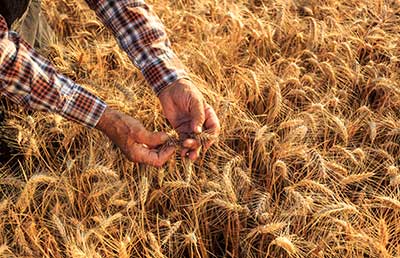What Can Farmers Expect?

One of my favorite tax law sayings is “We have the Law – Now we need the Rules”. The same will apply to the Cononavirus Aid, Relief and Economic Security (CARES) Act signed by President Trump on Friday. We know the law but likely on most of the Act we still don’t know the rules. However, let’s review some of the key provisions that CARES can provide for farmers.
We know the USDA received a $14 billion allocation to replenish the CCC coffers. This allows the Secretary to come up with some type of “MFP” type program to assist farmers. It will not be called the Market Facilitation Program since this has nothing to do with a tariff impact. Also, farmers who benefitted under the MFP program may not benefit as much under this program since the payments are more likely to be evenly distributed versus a tariff impact payment structure.
Second, Secretary Purdue’s office received an additional $9.5 billion that is targeted to provide relief for cattle and other livestock producers plus most of the specialty crops that appear to have been impacted the most by COVID-19 to date. Only hog and dairy participated under MFP; whereas cattle farmers should participate now.
Farmers will have a choice between obtaining a SBA Payroll Protection Program (PPP) loan that provides immediate cash or receiving a retention credit of 50% of the first $10,000 of employee wages. If the PPP loan is forgiven, the employer share of payroll taxes may not be deferred for the remainder of 2020. Under the deferral program, half of the applicable payroll taxes will be due on December 31, 2021 and the remaining half are due on December 31, 2022. You will need to carefully review these options with both your banker and your tax professional as additional rules are issued.
If your annual total payroll costs are less than $100,000, then neither option (PPP loan or deferral of payroll taxes) will provide much benefit. For example, the maximum loan available under the PPP program is 2.5 times one month’s average payroll costs. $100,000 of payroll costs would generate a maximum loan of about $21,000. If you spend at least this amount on payroll, rents, interest on mortgages and utilities by June 30, 2020, the loan is forgiven and it is non-taxable.
The payroll tax credit could generate up to about $15,000 of savings (assuming three employees paid at least $10,000 in the quarter) and the deferral of payroll taxes might generate a few thousand dollars of additional cash flow savings.
However, if you are dairy or other farm operation with 100’s of employees, the PPP program likely will provide the most benefit assuming that you qualify under the “rules” to be issued.
Our next blog post will outline the major tax changes provided by CARES.
Paul Neiffer is a certified public accountant and business advisor specializing in income taxation, accounting services, and succession planning for farmers and agribusiness processors. Paul is a principal with CliftonLarsonAllen in Walla Walla, Washington, as well as a regular speaker at national conferences and contributor at agweb.com. Raised on a farm in central Washington, he has been immersed in the ag industry his entire life, including the last 30 years professionally. Paul and his wife purchase an 180 acre ranch in 2016 and enjoy keeping it full of animals.

Hi Paul, I noticed on the sba website preapplication, applicants have to certify that they are “not” an agricultural enterprise, amongst other self certifications that, if not checked, render one ineligible. Any thoughts? Are farmers eligible for the ppp?